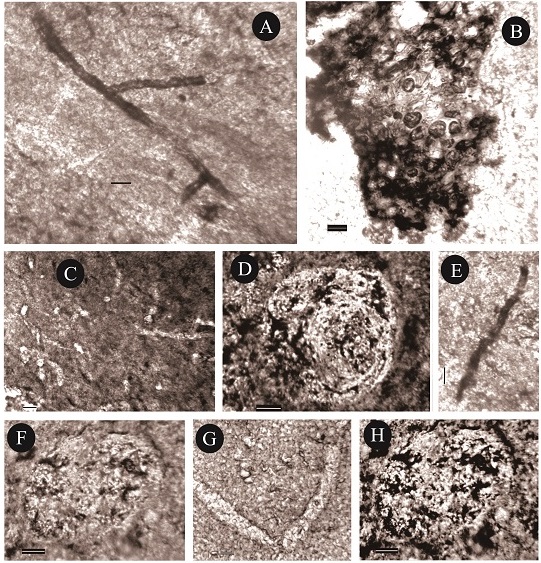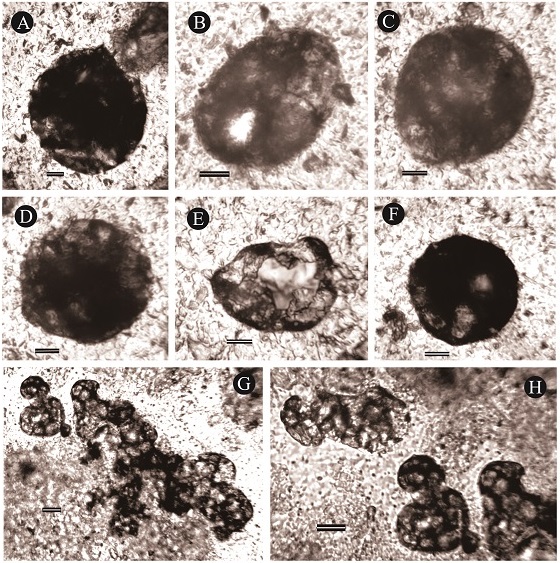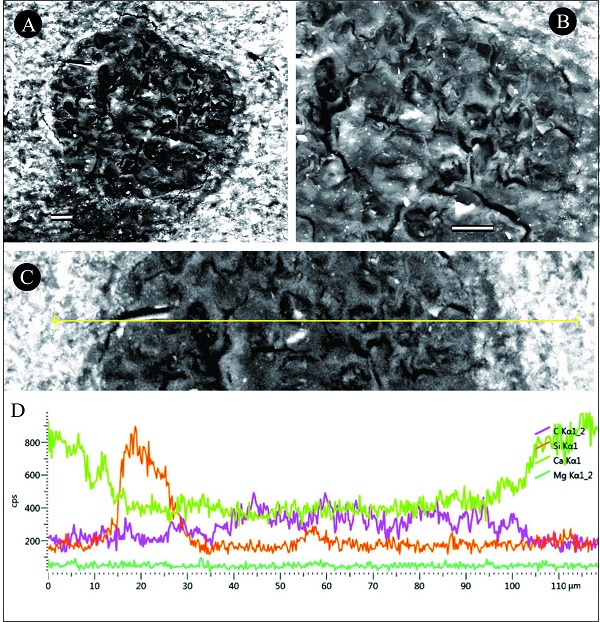The origin of eukaryotes is a milestone event in the history of life evolution. According to the metabolic mode of modern eukaryotes, it is possible for eukaryotes to appear only after the formation of the oxidation atmosphere. Sedimentological and geochemical evidences show that the formation of the earth's atmosphere oxidation is not later than the early Proterozoic, but the reliable eukaryote fossils which were found in the strata of this period are very limited.
The early Precambrian strata in Wutai Mountain area of North China platform are relatively complete, mainly distributed in Archean Wutai Group and early Proterozoic Hutuo Group. The lower part of Dongye subgroup of the early Proterozoic of Hutuo Group is characterized by sandstone or slate, and the upper part is interbedded with sandstone, carbonate rock, stromatolite and phyllite. According to the latest zircon dating, the age of Hutuo Group is about 2150-1950 Ma.
Professor YIN Leiming, Dr. MENG Fanwei and doctoral student NIU Changtai from Nanjing Institute of Geology and Paleontology, Chinese Academy of Sciences (NIGPAS), have discovered a large number of microfossils in Wenshan formation, Hebiancun Formation and Tianpengnao Formation in Dongye subgroup of Hutuo Group by rock slicing and macerating method. The research results were published in the international journal Precambrian Research.
Eight morphological genera have been identified in this study, including spherical, filamentous cyanobacteria and acritarchs (most of their genetic relationships are related to eukaryotic algae). This study shows that in the early Proterozoic ocean, in addition to a large number of prokaryote cyanobacteria, eukaryotes also existed in the marine planktonic biosphere.
Acritarch fossils are organic-walled microfossils with unidentified taxonomic origin. They are mainly distributed in Precambrian and early Paleozoic ocean, and cannot be compared with modern planktonic algae. However, it is speculated that most of their genetic relationships are related to eukaryotic algae and are the main providers of early marine primary productivity. In the Hutuo Group of China, there are some ornamentation on the surface of these acritarchs with the large diameter which indicate the characteristics of eukaryote fossils, while the prokaryote fossils have no complex ornamentation.
This study shows that in the early Proterozoic ocean, in addition to a large number of prokaryote cyanobacteria, eukaryotes have also existed in the marine planktonic biosphere. Eukaryotes undergo mitosis, and meiosis of sexual reproduction is a special form of mitosis. In the more than 3 billion years of the earth's life history, before the emergence of eukaryotic cells, the earth has been in a monotonous biosphere for a long time; however, after the emergence of sexual reproduction, the biosphere on earth has become colorful, and sexual reproduction has accounted for more than 98% of the earth's biosphere. Therefore, the records of eukaryote fossils are particularly important for the evolution of the earth.
This study was financially supported by the National Natural Science Foundation of China, the Natural Science Foundation of Jiangsu Province, the Strategic Priority Research Program (B) of the Chinese Academy of Sciences and State Key Laboratory of Palaeobiology and Stratigraphy (Nanjing Institute of Geology and Palaeontology, CAS).
Reference: Leiming Yin*, Fanwei Meng, Fanfan Kong, Changtai Niu,2020. Microfossils from the Paleoproterozoic Hutuo Group, Shanxi, North China: Early evidence for eukaryotic metabolism. Precambrian Research, 342 (2020) 105650. https://doi.org/10.1016/j.precamres.2020.105650.

Stratigraphic column of the Paleoproterozoic Hutuo Group and sampling horizons of the Dongye Subgroup (Modified from She et al., 2016)

Photomicrographs of microfossils from the Hebiancun Formation

Photomicrographs of microfossils in thin sections of siliceous lenses from the Hebiancun Formation

Scanning electron microscope images and energy spectrum results of a microfossil. from the Hebiancun Formation
Download:
